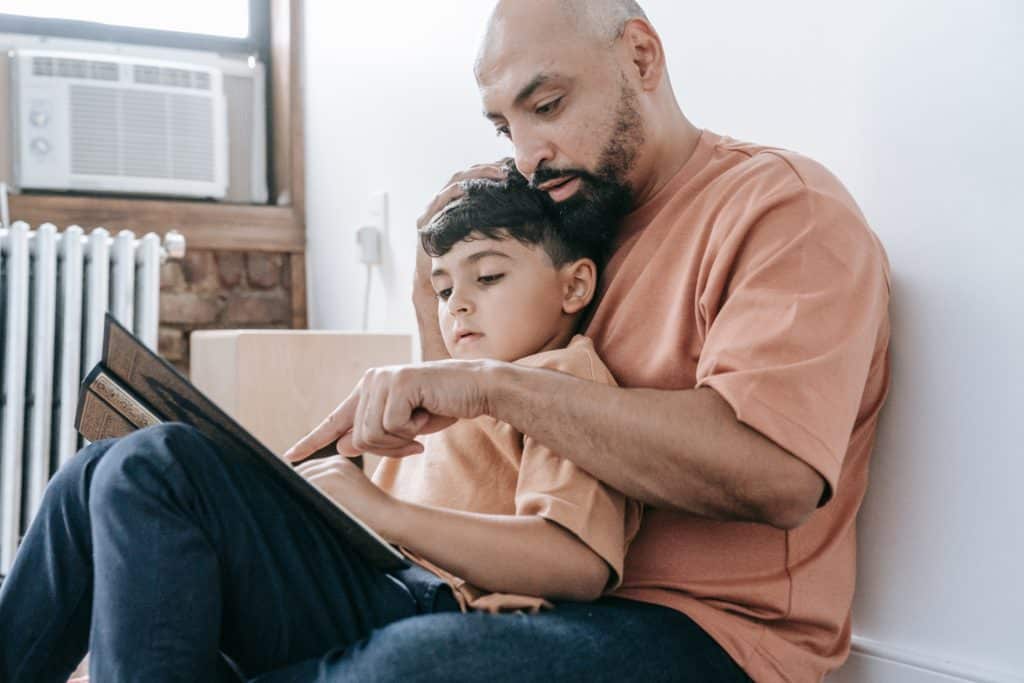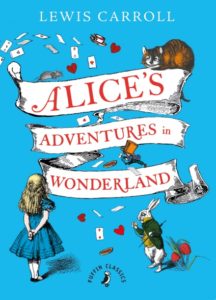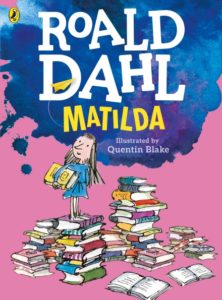Call free on: 0800 389 2839
Call free on: 0800 389 2839
Join in... The latest news and blogs from NEC
Celebrating the power of children’s literature Monday, 13 September 2021

As he put his hand on the door latch, she said, “If the red blob leads to Kingsbury and the blue blob goes to Porthaven, where does the black blob take you?”
“What a nosy old woman you are!” said Howl. “That leads to my private bolt hole and you are not being told where it is.”
In the depths of lockdown, with schools closed and stay-at-home orders firmly in place, many of us could have done with Wizard Howl’s magical spinning doorknob in the 1986 Diana Wynne Jones classic Howl’s Moving Castle.
As the next best thing, however, there’s a lot to be said in favour of books as private bolt holes. Poignant research from the National Literacy Trust shows that three in every five children and young people coped with the spring 2020 lockdown by reading, while three in ten said that reading helped with sadness about the separation from family and friends. We have long hailed our favourite stories as “escapism”; yet up until recently, many of us remained blissfully unaware of what that could mean.
 Children’s literature bewitches children and adults alike. We seek out beautiful and meaningful books for our children in order to educate them about the world, school them in empathy and expand their horizons; we ourselves return to the books we read as children as a source of wisdom and solace, and continually seek new ways to engage with old stories through reprints and reimaginings. Arguably few books aimed at ‘grown-ups’ have had quite the seismic cultural impact of Lewis Carroll’s Alice’s Adventures in Wonderland or J.K. Rowling’s Harry Potter series, while a brief venture into Facebook will reveal any number of specialist groups devoted to writers ranging from Tove Jansson to Terry Pratchett.
Children’s literature bewitches children and adults alike. We seek out beautiful and meaningful books for our children in order to educate them about the world, school them in empathy and expand their horizons; we ourselves return to the books we read as children as a source of wisdom and solace, and continually seek new ways to engage with old stories through reprints and reimaginings. Arguably few books aimed at ‘grown-ups’ have had quite the seismic cultural impact of Lewis Carroll’s Alice’s Adventures in Wonderland or J.K. Rowling’s Harry Potter series, while a brief venture into Facebook will reveal any number of specialist groups devoted to writers ranging from Tove Jansson to Terry Pratchett.
Of course, while books for children can feel more vibrant than their grown-up equivalents, they can also be both rather sharper and darker. Philip Pullman began his Carnegie Medal acceptance speech in 1996 with the assertion that “there are some themes, some subjects, too large for adult fiction; they can only be dealt with adequately in a children’s book.” We shelve some of English literature’s most nuanced explorations of ethics, morality and the human condition in the children’s section: Malorie Blackman’s Noughts and Crosses, Pullman’s His Dark Materials trilogy, Judith Kerr’s When Hitler Stole Pink Rabbit, Mark Haddon’s The Curious Incident of the Dog in the Night-Time.
 Reading fiction can therefore be a brilliant way to introduce children to the complications of history, politics and society. Even less typically “literary” books for children still pave the way for further understanding of the world: Jacqueline Wilson has introduced generations of children to a variety of difficult and sometimes taboo topics such as bereavement, poverty, family separation and the care system, while Roald Dahl’s Matilda serves not only as a manifesto for the importance of literacy but also directs its young readers towards hefty works by Ernest Hemingway, Jane Austen and even George Orwell.
Reading fiction can therefore be a brilliant way to introduce children to the complications of history, politics and society. Even less typically “literary” books for children still pave the way for further understanding of the world: Jacqueline Wilson has introduced generations of children to a variety of difficult and sometimes taboo topics such as bereavement, poverty, family separation and the care system, while Roald Dahl’s Matilda serves not only as a manifesto for the importance of literacy but also directs its young readers towards hefty works by Ernest Hemingway, Jane Austen and even George Orwell.
Children who enjoy reading have been shown to be happier in their lives and more likely to succeed in school, yet 1 in 8 children who receive free school meals don’t have a book of their own at home while 1 in 4 children overall did not have access to a quiet space during lockdown. As we celebrate the glittering worlds of children’s literature, it is critical that we do not forget those young people for whom our favourite titles are, ultimately, intended. Every young person deserves a private bolt hole and a selection of books to read there. Every child deserves a bit of escapism.
You can donate to the National Literacy Trust here.
Fancy taking your love of reading a step further? Enrol on one of our GCSE or A level English Literature courses now.
Helen Grant is a recent graduate from Murray Edwards College, Cambridge and NEC’s current marketing intern.
Leave a Reply Cancel reply
More stories
working at NEC
Uncategorized
- Balancing an A level with My Passion for Dance
- The Future of Art History: Why Study A level History of Art with the National Extension College?
- Why Study Physics?
- Embracing a New Path: Jill’s Journey from Online Learning to Career Success in Art History
- How Toby Found a Perfect Fit for His Passion: Online A level English Literature with NEC
Study Tips
Student Stories
- Balancing an A level with My Passion for Dance
- Passion and Academics: How Izzy Balances Full-time Musical Theatre Studies with Studying A level Physics
- How NEC Helped Kari’s Son Niko to Continue his A level Studies Despite Long-Term Illness
- Embracing a New Path: Jill’s Journey from Online Learning to Career Success in Art History
- How Toby Found a Perfect Fit for His Passion: Online A level English Literature with NEC
SFT
Results Day
- Resitting A level STEM Subjects: How to Turn Your Setback into a Stepping Stone for a Brighter Future
- Resits vs. Retakes: Understanding the Difference and Making the Most of Your Second Chance
- GCSE Results Day 2024: What to Do When You Didn’t Get the GCSE Results You Wanted
- GCSE Results Day 2024: Your Complete Guide
- A level Results Day 2024: Your Ultimate Guide to Success
Policy and Campaigns
- A Pathway to Success Beyond A levels: Why Level 4 and Level 5 Qualifications Matter
- Schools and Academies Show 2024: Insights for School Leaders
- Big Data and Educational Trends: Insights for Students and Schools
- University of Cambridge Institute of Continuing Education offers tuition fee bursary for NEC A level students
- Five study bursaries for state sector teachers to take online A level Classical Civilisation offered by The Classical Association
Podcast
Our Courses
- Balancing an A level with My Passion for Dance
- How NEC’s Inclusive Approach to Learning Design is Redefining Independent Learning
- NEC’s Learning Design: A Pathway to Success for Independent Learners
- Passion and Academics: How Izzy Balances Full-time Musical Theatre Studies with Studying A level Physics
- Why Study Psychology? – Key Benefits, Careers and What You’ll Need to Study Psychology at University
Lifelong Learning
- A Pathway to Success Beyond A levels: Why Level 4 and Level 5 Qualifications Matter
- Benefits of Homeschooling: Is Home Education Right for Your Family?
- How NEC’s Inclusive Approach to Learning Design is Redefining Independent Learning
- The Future of Art History: Why Study A level History of Art with the National Extension College?
- National Coding Week 2024: The Vital Role of Coding in the Modern World
Home Schooling
- Benefits of Homeschooling: Is Home Education Right for Your Family?
- How NEC Helped Kari’s Son Niko to Continue his A level Studies Despite Long-Term Illness
- Exploring Science Practicals at Home: A Guide for Homeschoolers
- Homeschooling in 2024: How to Personalise Your Child’s Education
- What is Homeschooling?
Guest Blogs
- Passion and Academics: How Izzy Balances Full-time Musical Theatre Studies with Studying A level Physics
- My Experience as a Marketing Intern with the National Extension College
- The economics of political parties
- Embarking on a journey: My decision to ‘Fast-Track’ A level Physics with NEC
- Homeschooler Andrew’s experience of studying IGCSE Chemistry
General
- Balancing an A level with My Passion for Dance
- A Pathway to Success Beyond A levels: Why Level 4 and Level 5 Qualifications Matter
- Schools and Academies Show 2024: Insights for School Leaders
- How NEC’s Inclusive Approach to Learning Design is Redefining Independent Learning
- NEC’s Learning Design: A Pathway to Success for Independent Learners

Add a new comment
Current comments: 0